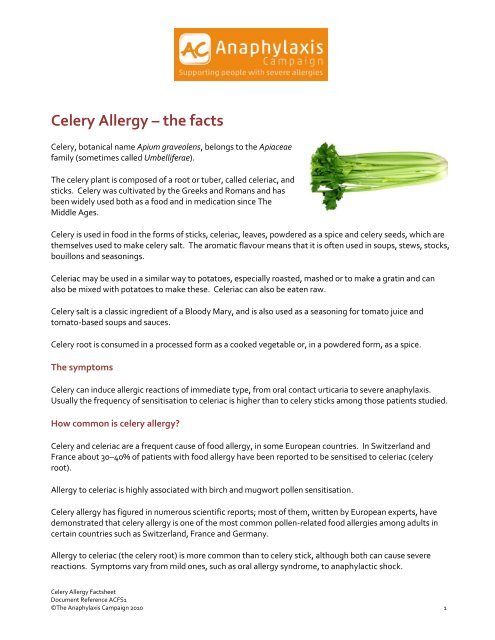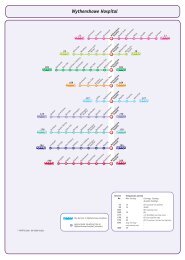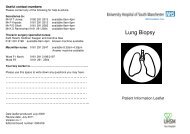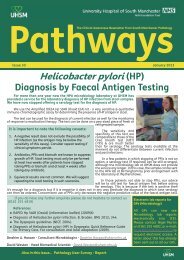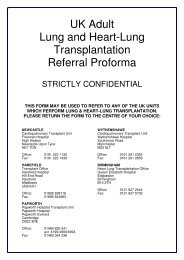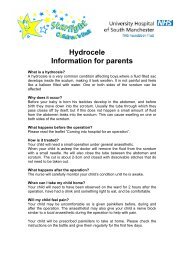Celery Allergy – the facts - Anaphylaxis Campaign
Celery Allergy – the facts - Anaphylaxis Campaign
Celery Allergy – the facts - Anaphylaxis Campaign
You also want an ePaper? Increase the reach of your titles
YUMPU automatically turns print PDFs into web optimized ePapers that Google loves.
<strong>Celery</strong> <strong>Allergy</strong> <strong>–</strong> <strong>the</strong> <strong>facts</strong><br />
<strong>Celery</strong>, botanical name Apium graveolens, belongs to <strong>the</strong> Apiaceae<br />
family (sometimes called Umbelliferae).<br />
The celery plant is composed of a root or tuber, called celeriac, and<br />
sticks. <strong>Celery</strong> was cultivated by <strong>the</strong> Greeks and Romans and has<br />
been widely used both as a food and in medication since The<br />
Middle Ages.<br />
<strong>Celery</strong> is used in food in <strong>the</strong> forms of sticks, celeriac, leaves, powdered as a spice and celery seeds, which are<br />
<strong>the</strong>mselves used to make celery salt. The aromatic flavour means that it is often used in soups, stews, stocks,<br />
bouillons and seasonings.<br />
Celeriac may be used in a similar way to potatoes, especially roasted, mashed or to make a gratin and can<br />
also be mixed with potatoes to make <strong>the</strong>se. Celeriac can also be eaten raw.<br />
<strong>Celery</strong> salt is a classic ingredient of a Bloody Mary, and is also used as a seasoning for tomato juice and<br />
tomato-based soups and sauces.<br />
<strong>Celery</strong> root is consumed in a processed form as a cooked vegetable or, in a powdered form, as a spice.<br />
The symptoms<br />
<strong>Celery</strong> can induce allergic reactions of immediate type, from oral contact urticaria to severe anaphylaxis.<br />
Usually <strong>the</strong> frequency of sensitisation to celeriac is higher than to celery sticks among those patients studied.<br />
How common is celery allergy?<br />
<strong>Celery</strong> and celeriac are a frequent cause of food allergy, in some European countries. In Switzerland and<br />
France about 30<strong>–</strong>40% of patients with food allergy have been reported to be sensitised to celeriac (celery<br />
root).<br />
<strong>Allergy</strong> to celeriac is highly associated with birch and mugwort pollen sensitisation.<br />
<strong>Celery</strong> allergy has figured in numerous scientific reports; most of <strong>the</strong>m, written by European experts, have<br />
demonstrated that celery allergy is one of <strong>the</strong> most common pollen-related food allergies among adults in<br />
certain countries such as Switzerland, France and Germany.<br />
<strong>Allergy</strong> to celeriac (<strong>the</strong> celery root) is more common than to celery stick, although both can cause severe<br />
reactions. Symptoms vary from mild ones, such as oral allergy syndrome, to anaphylactic shock.<br />
<strong>Celery</strong> <strong>Allergy</strong> Factsheet<br />
Document Reference ACFS1<br />
©The <strong>Anaphylaxis</strong> <strong>Campaign</strong> 2010 1
Geographical differences are interesting. In Central Europe, a high proportion of people with birch pollen<br />
allergy are prone to celery allergy. In Sou<strong>the</strong>rn Europe celery allergy is most frequently related to mugwort<br />
pollen, and in those cases it is potentially more severe.<br />
Thermal processing does not completely deplete <strong>the</strong> allergenicity of celery, according to reports. For some<br />
people allergic reactions to cooked celery will take place, even after high temperatures are used. Particular<br />
proteins may be responsible for serious systemic reactions ra<strong>the</strong>r than simply oral ones.<br />
<strong>Celery</strong> allergy is much rarer in <strong>the</strong> UK and <strong>the</strong> situation may not be <strong>the</strong> same as <strong>the</strong> findings in Europe.<br />
It is worth noting that sometimes in <strong>the</strong> medical literature celery and celeriac are clearly distinguished and on<br />
o<strong>the</strong>r occasions <strong>the</strong> term celery is used for all forms.<br />
Pre-packaged foods<br />
All pre-packaged food sold within <strong>the</strong> EU must declare major allergens, including <strong>the</strong> presence of celery, even<br />
if <strong>the</strong>y appear in minute quantities.<br />
The content of this Fact Sheet has been Peer Reviewed by Dr Michael Radcliffe, Consultant in <strong>Allergy</strong><br />
Medicine, Royal Free NHS Trust.<br />
Disclaimer <strong>–</strong>The information provided in this <strong>facts</strong>heet is given in good faith. Every effort has been taken to ensure<br />
accuracy. All patients are different, and specific cases need specific advice. There is no substitute for good medical<br />
advice provided by a medical professional.<br />
About <strong>the</strong> <strong>Anaphylaxis</strong> <strong>Campaign</strong> <strong>–</strong> “supporting people with severe allergies”<br />
The <strong>Anaphylaxis</strong> <strong>Campaign</strong> is <strong>the</strong> only UK wide charity to exclusively meet <strong>the</strong> needs of <strong>the</strong> growing numbers<br />
of people at risk from severe allergic reactions (anaphylaxis) by providing information and support relating to<br />
foods and o<strong>the</strong>r triggers such as latex, drugs and insect stings. Our focus is on medical <strong>facts</strong>, food labelling,<br />
risk reduction and allergen management. The <strong>Campaign</strong> offers tailored services for individual, clinical<br />
professional and corporate members.<br />
Visit our website www.anaphylaxis.org.uk<br />
<strong>Celery</strong> <strong>Allergy</strong> Factsheet Reviewed November 2011<br />
Document Reference ACFS1 Next review January 2012<br />
©The <strong>Anaphylaxis</strong> <strong>Campaign</strong> 2011<br />
The <strong>Anaphylaxis</strong> <strong>Campaign</strong>, PO Box 275, Farnborough, Hampshire GU14 6SX. Registered charity: 1085527<br />
Company Limited by guarantee. Company number: 4133242<br />
Telephone: 01252 546100 Helpline: 01252 542029 info@anaphylaxis.org.uk www.anaphylaxis.org.uk 2


